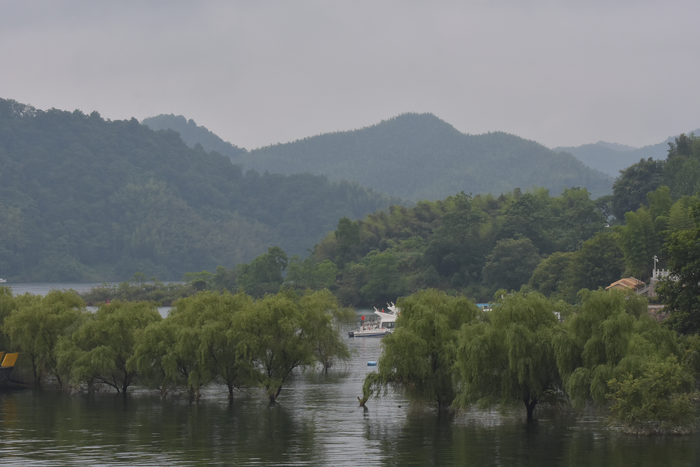Reviewed by Alex SmithMay 31 2022
The Western Pacific Subtropical High (WPSH) is an anticyclonic atmospheric system that floats over the lower and middle troposphere of the northwestern Pacific. This dominates summer climate extremes in the heavily populated East Asia countries.
 East China flooding in the summer of 2020. Image Credit: Yunfei Fu.
East China flooding in the summer of 2020. Image Credit: Yunfei Fu.
In the 2020 summer, an unusually powerful WPSH led to catastrophic floods with hundreds of deaths, 28,000 homes ruined, and tens of billions of dollars worth of financial damage in China alone.
Researchers from the Institute of Atmospheric Physics (IAP) of the Chinese Academy of Sciences and the Commonwealth Scientific and Industrial Research Organization (CSIRO) have discovered that the frequency of such strong WPSH events was observed in the summer of 2020.
It is also likely to increase under the business-as-usual carbon emissions scenario, depending on 32 climate models.
The study was published in the Proceedings of the National Academy of Sciences journal on May 30th, 2022.
The interannual intensity of the WPSH has been impacted by the unevenness of sea surface temperature (SST) in tropical regions like the Indian Ocean and the central Pacific. The irregular SST can impact both local and remote rainfall and atmospheric convection. This in turn regulates atmospheric circulation over the northwestern Pacific.
Due to global warming, rainfall and atmospheric convection can be highly sensitive to SST variability. This is because saturation vapor pressure increases in an exponential manner with increases in temperature.
In a warmer climate, the mean-state moisture content of the air will increase and the reaction of tropical humidity and linked gross moist instability to SST anomalies will also be bigger.
These changes combining with the non-uniform change in background SST can lead to enhanced responses of atmospheric convection to the central Pacific SST, and then increased variability of atmospheric circulation, including the WPSH.
Dr. Kai Yang, Study Lead Author, Institute of Atmospheric Physics, Chinese Academy of Sciences
“The increase in WPSH variability translates into an increase in frequency of strong WPSH events, which suggests that greenhouse warming is likely to increase the risk of East China flooding associated with strong WPSH events as seen in the 2020 episode,” stated Professor Gang Huang from IAP, one of the corresponding authors.